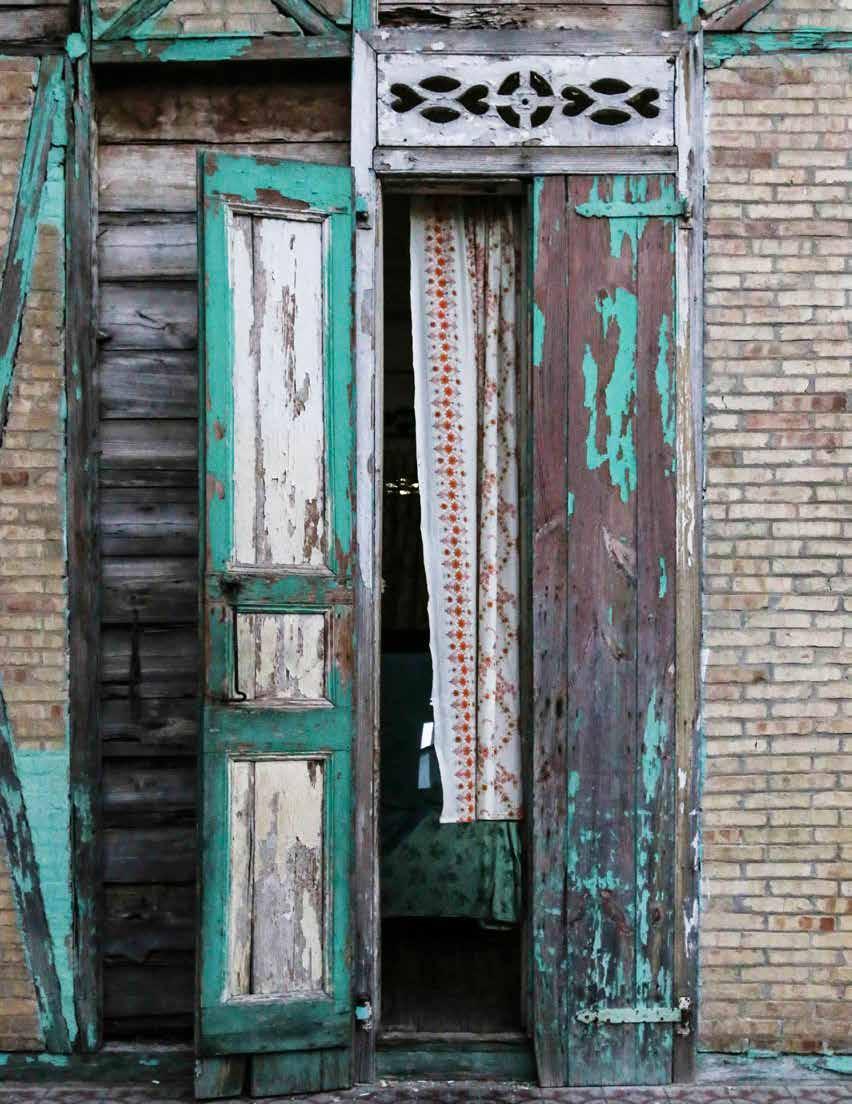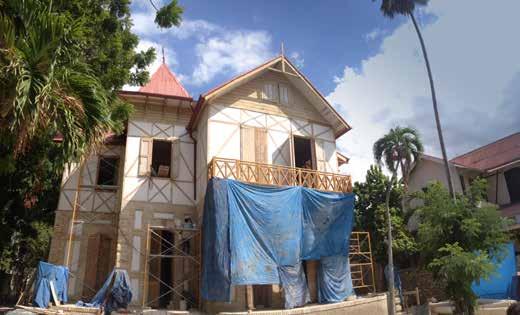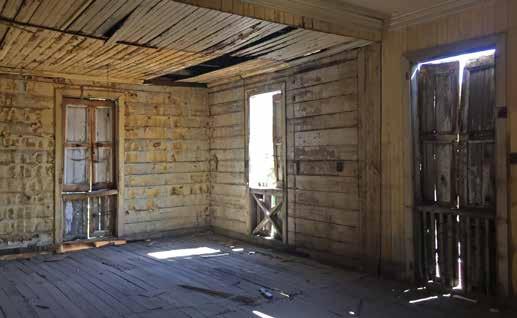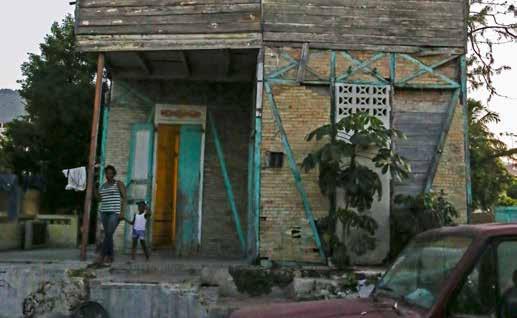
3 minute read
Analysis of Strengths, Weaknesses, Opportunities, and Challenges (SWOC
Secondary research, fieldwork, and conversations with various actors have informed and shaped the studio’s methodology, data analysis, and outcomes. They have also confirmed both the widespread appreciation for the Gingerbreads and FOKAL’s position as a neighborhood steward. While there has been general agreement that Gingerbread architecture is a valued aspect of Haitian heritage, the preservation of Gingerbread structures is not always a priority for residents and tenants. Additionally, the challenges of political volatility, vulnerability to natural disasters, and the lack of infrastructure are also apparent, affecting daily concerns of safety and sanitation as well as deterring long-term goals of preservation.
Despite the difficult conditions in Port-au-Prince and the limited governance structure for urban planning and heritage conservation, the team recognizes a great deal of potential for capitalizing on the existing strengths of FOKAL, the Gingerbreads, and the neighborhood in general. To better delineate their findings, the team undertook an analysis of Strengths, Weaknesses, Opportunities, and Challenges (SWOC) to synthesize the rich information gathered throughout the course of the studio.
FOKAL has proven capable of implementing ambitious projects in the area, such as the restoration of Maison Dufort.

Strengths. · Public appreciation for the Gingerbreads. · Aesthetic value of the Gingerbread style. · Structural resilience of the Gingerbreads. · Diversity of Gingerbread owners (comprising a variety of socioeconomic statuses). · Vibrant and diverse street life within the study area. · Youthful population with an entrepreneurial mindset. · Concentration of institutions in the study area: Schools, NGOs, churches, and government offices. · FOKAL’s legitimacy as a neighborhood institution: Proven capacity to engage the community and pool resources. Political and economic network at home and abroad. Demonstrated experience with Gingerbread restoration.

Weaknesses. · Inability to rely solely on government (legislation, infrastructure, etc.). · Lack of a cadastral survey. · Lack of local capital or access to loans for the built environment. · Loss of traditional craft knowledge and building materials. · Safety concerns. · Lack of public spaces. · Land tenure/ownership issues, absent property owners.
The lack of local timber and other materials hinders the preservation of the Gingerbreads.
Opportunities. · Current density of Gingerbreads in the study area: opportunity to replicate successful programming through scaling and distribution. · Diversity of Gingerbread stakeholders: opportunity to explore a range of funding needs.

The Gingerbread houses range from small, mixeduse properties to large, impressive residential villas. Socioeconomic diversity of stakeholders presents a opportunity to engage a wide cross-section of the neighborhood.
· Strong interest among students (UEH, HELP, Quisqueya) and community groups in participating in projects led by FOKAL: opportunity to leverage interest to grow network and implement small interventions for potentially large impact. · Gingerbreads are present, just obscured: opportunity to reintegrate Gingerbreads into the streetscape with minor adjustments. · Significant Haitian diaspora: opportunity to engage with diaspora population for expertise and financial support.
Engaging the local community is crucial to the success of any future proposals.

Challenges. · Barrier between local community and NGOs: further community engagement may be necessary before, during, and after implementing any proposals. (Due to disillusionment associated with foreign aid in Haiti, our survey was generally met with apprehension. This suggests that any interventions should actively engage the community to ensure their positive reception.) · Fast demolition rate of Gingerbreads: brought on by a lack of a regulatory framework, the age of the structures, the cost of repair, and the densification of the neighborhood. This exerts pressure on Gingerbread owners to demolish. · Absent owners: many owners of Gingerbreads live abroad and are not aware of the condition of their properties. · Lack of expertise or incentives to restore according to restoration standards: access to information and expertise is still a hurdle where capital is available. · Access to construction materials: given the lack of natural resources for building construction in Haiti, basic materials like timber and high-quality concrete are more expensive and must be imported from abroad. · Lack of vocational training and employment opportunities: to insure a larger pool of workers with the relevant skills to perform restoration work. · Ongoing volatile political climate in Haiti: will prevent any governmental role in protecting heritage resources. · Continuing threat of natural disaster.







